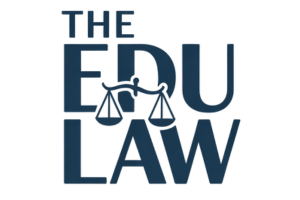Employment law in education exists to ensure that educators receive fair treatment while performing their duties. Teachers hold a position of public trust and play a vital role in student development, so legal frameworks help maintain stability and integrity in school systems.
Legal protections safeguard teachers against arbitrary treatment by school administrators and boards. These include procedural rights, job security, and access to fair dispute resolution.
Key legal sources include state statutes, employment contracts, collective bargaining agreements (CBAs), and decisions handed down by courts.
Let us talk about the teacher employment law in greater detail.
Teacher Employment Contracts
Teacher employment contracts form the legal foundation for the relationship between educators and their employing school districts. These contracts outline the duties, rights, and responsibilities of both parties and are essential in maintaining fairness, transparency, and accountability within the educational system.
Each contract serves not only as a job agreement but also as a critical legal document that can be enforced in disputes involving compensation, termination, or professional obligations.

Nature and Legal Validity of Contracts
Employment contracts for teachers must meet standard legal requirements to be enforceable. A valid contract is not simply a formality but a mutually agreed-upon document that provides clarity and accountability for both teacher and employer.
- Offer: A formal job offer made by the school district
- Acceptance: The teacher’s agreement to the offer
- Mutual assent: Agreement by both parties on contract terms
- Consideration: A benefit received by each party (e.g., salary in exchange for services)
Contracts remain nonbinding until approved by the school district’s board of education, highlighting the importance of formal ratification.
Teacher handbooks may influence contract interpretation. In cases where handbooks outline employment policies and procedures in detail, they can sometimes be viewed as implied contracts.
If teachers rely on handbook provisions in good faith, courts may consider them during legal disputes, especially when there is ambiguity in the official contract.

Terms and Conditions in Teaching Contracts
Contracts for teachers usually include specific language on job responsibilities, pay structure, and the conditions for employment renewal.
- Duration of employment: Typically a one- to three-year term, with provisions for renewal
- Evaluation criteria: Methods used by the district to assess performance
- Compensation details: Base salary, stipends, benefits, and additional duty pay
- Nonrenewal terms: Factors that may result in contract termination
- Probationary vs. tenure-track distinctions: Differences in security and expectations
Termination clauses often describe actions or failures that may lead to dismissal, such as insubordination or failure to meet performance standards.
Contracts distinguish clearly between new hires in a probationary period and those who have earned tenure, assigning different thresholds for discipline and removal.
Breach of Contract
Breach occurs when one party fails to meet its obligations under the contract without legal justification. Teachers and school districts can both be liable under these circumstances.
- Unjustified termination
- Reduction of agreed compensation
- Denial of due process in disciplinary matters
Examples of breach by the teacher include:
- Resignation without required notice
- Abandonment of contract mid-academic year
- Failure to fulfill teaching duties
Remedies for breach of contract depend on the circumstances and state laws. Legal responses may involve:
- Monetary damages: Compensation for losses resulting from breach
- Specific performance: Court-ordered enforcement of contract terms
- Penalties: As stipulated in the contract, such as liquidated damages for early resignation
Knowing these details helps both educators and administrators avoid disputes and preserve professional relationships through clearly defined expectations and accountability mechanisms.
Teacher Dismissal and Discipline

Teachers operate in a profession governed by legal frameworks that balance institutional authority with individual rights. Dismissal and disciplinary actions carry significant consequences, not just for a teacher’s career but for institutional integrity.
Legal structures define the extent of protections afforded to educators, which can vary based on tenure status, union representation, and contractual terms.
Tenured vs. Non-Tenured Teachers
Tenure serves as a legal safeguard for experienced educators, limiting administrative discretion in termination decisions. Once tenure is granted, dismissal must follow stringent rules and be backed by evidence proving just cause.
The objective is to shield educators from arbitrary or retaliatory treatment.
Non-tenured teachers generally have contracts that can be nonrenewed more freely.
However, they are not without legal protections. Even during probationary periods, they must receive basic procedural fairness when discipline is involved.
Key differences between tenured and non-tenured status include:
- Protection from arbitrary or politically motivated dismissal
- Dismissal only with just cause and evidentiary support
- Access to formal appeal procedures
Non-Tenured Teachers:
- Employment more easily nonrenewed at term’s end
- Still entitled to notice and hearing in disciplinary actions
- Limited but enforceable procedural rights
Due Process in Dismissals
More than 700 JSS teachers dismissed by the TSC in June have been returned to their jobs after a Ministry of Education review found the dismissals violated due process
— Moe (@moneyacademyKE) August 4, 2024
Procedural safeguards are central to any dismissal process. Teachers, regardless of tenure status, are entitled to fair notice and an opportunity to be heard.
Due process ensures that schools cannot act unilaterally without legal accountability.
Hearings may be conducted by school boards or third-party officers with the authority to evaluate evidence and issue findings. Teachers may be suspended pending a decision, but such action must not preclude a fair outcome.
- Written notice outlining allegations
- Access to a formal or informal hearing
- Right to legal or union representation
- Opportunity to present evidence and cross-examine witnesses
- Option to appeal decisions through administrative or judicial channels
- Reinstatement with back pay if the dismissal is overturned
Grounds for Dismissal
Statutory law typically outlines acceptable reasons for terminating a teacher. These grounds serve to protect public education standards while ensuring that teachers who violate professional obligations can be removed.
Employers bear the responsibility of proving that the cited reasons justify termination. Immediate dismissal may occur in severe instances, such as misconduct involving student safety or criminal charges.
- Insubordination or repeated failure to follow directives
- Immoral or criminal conduct
- Negligence or incompetence in professional duties
- Unprofessional or disruptive behavior
- Fraudulent credentialing or falsification of records
Collective Bargaining and Employment Protections

Collective bargaining serves as a structural buffer between administrative power and employee rights. It establishes legally enforceable expectations for discipline and grievance handling. This section highlights how CBAs and union involvement shape teacher protections.
Role of Collective Bargaining Agreements (CBAs)
CBAs are negotiated documents that define working conditions, evaluation procedures, and disciplinary protocols. They often go further than statutory law in protecting educators.
Progressive discipline is a core feature, emphasizing correction over punishment. This step-based model ensures that teachers are not terminated for minor issues without warning.
- Verbal warning
- Written reprimand
- Formal suspension with or without pay
- Recommendation for termination
CBAs may restrict how evaluations are used or require that disciplinary records be cleared after a certain time. They can limit administrative discretion and offer clear grievance channels.
Union Representation
Unions defend contractual rights and ensure that disciplinary action complies with negotiated terms.
They provide legal counsel during investigations, hearings, and appeals.
Teachers under investigation often benefit from having union representatives present to guide them through procedures and ensure fairness.
- Legal defense in disciplinary or dismissal cases
- Assistance with grievances and mediation
- Negotiation of fair disciplinary policies
- Advocacy for member rights in broader policy discussions
Legal Resources and Support for Teachers

Educational environments continue to evolve, introducing new legal challenges. Remote instruction, fluctuating state laws, and shifts in public policy demand constant vigilance.
Teachers face increased scrutiny tied to performance monitoring, especially in digital platforms. New evaluation metrics and behavior expectations may affect contract renewal or tenure attainment.
- Virtual teaching accountability and unclear performance metrics
- Shifting state laws reducing or expanding tenure rights
- Contract amendments tied to technology use and classroom access
- Greater need for continuous professional development
Staying current on legal changes is essential. Regular training and communication with unions or legal advisors can prevent disputes and clarify expectations.
The Bottom Line
Legal knowledge equips teachers to protect their careers and advocate for fair treatment. Regularly reviewing contracts, handbooks, and union materials helps avoid surprises.
Support systems, including unions and legal professionals, are essential allies in ensuring due process, job security, and professional dignity.

